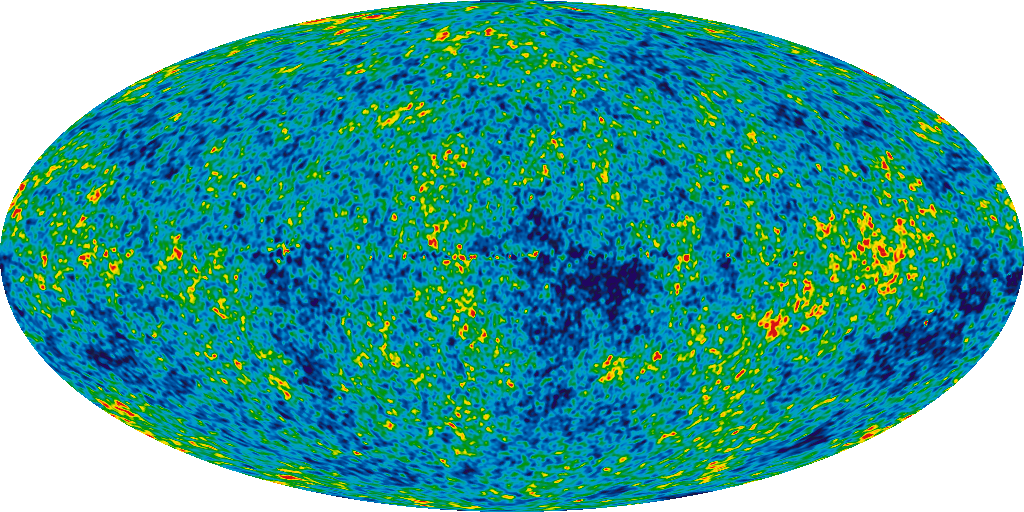LISA Special Exhibit
The Big Bang

A map of the entire sky from NASA's WMAP satellite, which operated from 2001 to 2012. The colors indicate slight temperature fluctuations in the CMB. Blue indicates slightly cooler areas, red slightly hotter. (Credit: NASA/WMAP Science Team)
Just as NASA's Wilkinson Microwave Anisotropy Probe (WMAP) mapped out the cosmic microwave background (CMB), astronomers hope to map out the sky in gravitational waves. WMAP studied tiny variations in the temperature of the microwave background, radiation dating back to about 400,000 years after the Big Bang and as far back as we can see with light. Gravitational waves can tell us about the universe at an even younger age – potentially as young as just 10-34 seconds, or less than a billionth of a trillionth of a trillionth of second old.
Right after the Big Bang, the universe was emitting gravitational waves, which means we could gather information all the way back to this time if there were waves strong enough to detect. Most current theories of the formation of the universe do not predict sufficiently strong waves from this very early time, although it would be very exciting if a project like LISA succeeded at seeing them. Some recent theories of cosmic strings predict stronger sources of gravitational waves, but there is no general agreement that these theories are correct.
A project like LISA could provide us with important clues about how matter clumped together to form the large-scale structures that we see today – galaxies and galaxy clusters. Scientists know that very large black holes – exceeding a million times the mass of the sun – reside at the centers of most large galaxies. LISA would be very good at studying the gravitational waves emitted when the central black holes of merging galaxies themselves collide and merge and as they gather mass from other stars that spiral in. Such observations will give us important information about how these large black holes (and therefore the surrounding galaxies) form and grow.
Published: August 2003
Text Reviewed: September 2018


